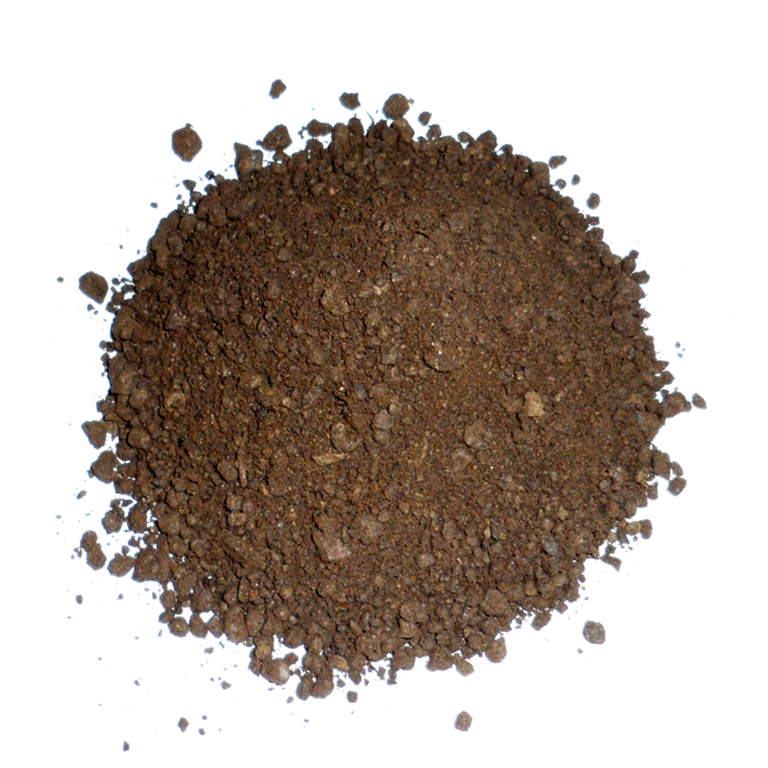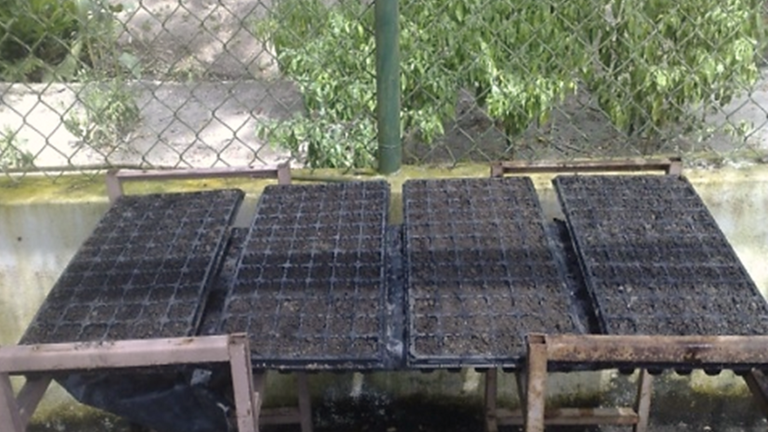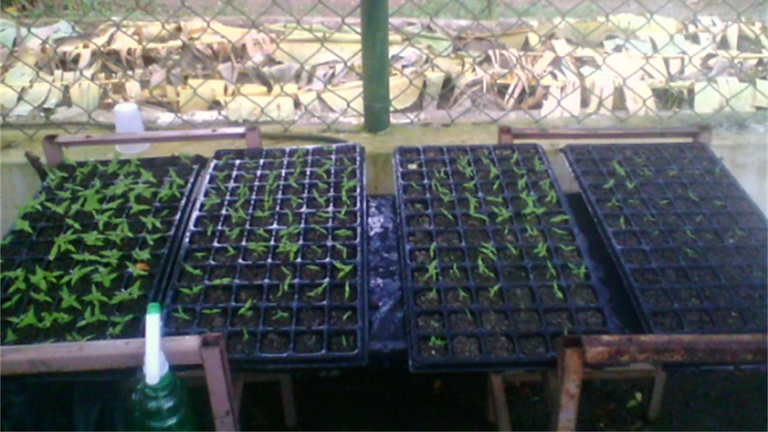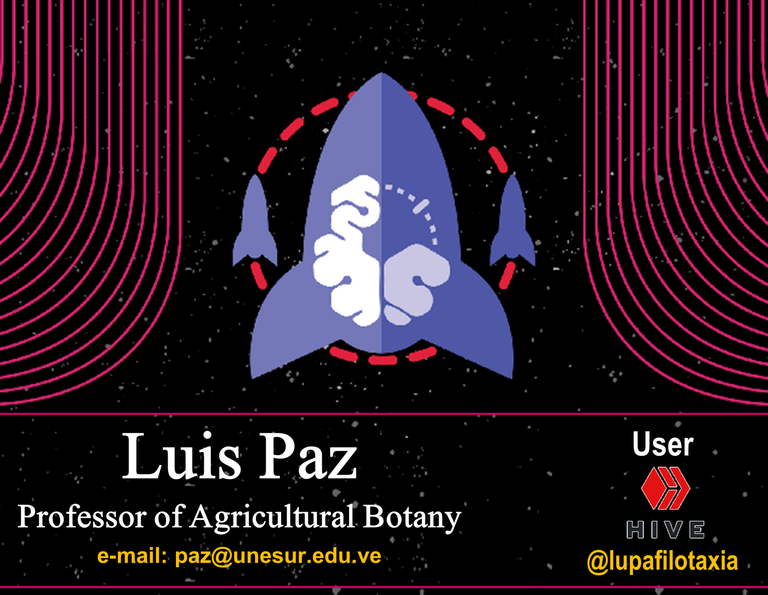
Greetings dear friends of the #HIVE platform, with this manuscript I want to disclose elements of biological behavior that show the seedlings of Capsicum annuum (Sweet Pepper), in organic substrates type Bocashi and commercial substrates type Blonde Peat.
Introduction
For any agricultural sector, the production of healthy and vigorous seedlings is the most important technical aspect to consider, hence, the type of substrate for the vegetative mass of commercial seedlings, in addition to the nutritional quality, must have good moisture retention, and its structure must allow an adequate removal of the tray, without losing consistency so that the seedlings are not mistreated during the phase of transplantation to the final field.
Generally the commercial substrates used for the production of healthy and vigorous seedlings are the substrates type blonde peat and black peat, however, its application has been widely questioned, mainly because, generate negative environmental impacts on natural wetlands where they are usually extracted in large proportions, on the other hand, for agricultural producers these types of commercial substrates raises the cost of producing seedlings in trays.
It is important to point out that in South America, and particularly in Venezuela, agricultural producers find it difficult to obtain peat-type substrates, basically because it is a very expensive imported product, and in most cases its granulometric and nutritional characteristics do not completely satisfy the inorganic and organic requirements of seedlings of tropical origin. In this sense, the objective of the present publication consists of socializing the effect of the organic fertilizer type Bocashi, and its utility as substrate in the production of sweet bell pepper seedlings (Capsicum annuum).
Conceptual Overview
Peat and seedling production
The use of blonde peat for commercial purposes has been causing serious problems with the accelerated environmental degradation that natural moss-rich wetlands in temperate zones are currently experiencing. This is because, on a global scale, it is one of the most widely used substrates for the production of seedlings, and based on this questioning, it is necessary to implement new alternatives, among them the use of organic substrates based on bocashi, in principle because they contain the essential nutrients of commercial substrates, namely nitrogen (N), phosphorus (P), potassium (K), calcium (Ca), magnesium (Mg), iron (Fe), zinc (Zn), copper (Cu), and boron (B), and they also have optimal granulometric characteristics for the production of tropical species, aspects that are favorable to replace the substrate type blond peat, in those countries with technical import difficulties.

Fig. 2 Blonde peat mixed with clay soil. Author: @lupafilotaxia.
Bocashi
From the theoretical point of view, the bocashi is an organic fertilizer in solid presentation, which is obtained through a short process of decomposition and mineralization by anaerobic fermentation, of organic materials of both vegetable and animal origin, whose thermodynamic variations of degradation are executed by microorganisms such as yeasts, and lactic acid bacteria.

Fig. 3 Organic bocashi-type substrate. Author: @lupafilotaxia.
Production of sweet bell pepper seedlings
The producers of sweet bell pepper seedlings (Capsicum annuum), face the same problems as the rest of the vegetable producers, who demand substrates such as blonde peat to produce their seedlings on a large scale, hence the interest in providing viable agronomic alternatives, tending to reduce the high costs of production, and simultaneously ensure the massification of healthy and vigorous seedlings.
Agro-morphological field study
Species and area of study
In order to include experimental content, I wanted to share with all users of the #Hive platform, some answers that show the sweet bell pepper seedlings (Capsicum annuum) in the early stages of vegetative growth, when bocashi is used as substrate at the nursery level, the trial was conducted in the nursery of the Botanical Garden of UNESUR, located in Santa Barbara of Zulia - Venezuela, in a tropical rainforest area, at an altitude of 5 m. s.n.m., with a maximum average temperature of 32°C during the day and 21°C at night, radiation of 2,130 Kcl/year, average precipitation of 1,250 mm/year, winds of intensity 10 Km/h from north to south and a relative humidity above 80%.
Methodological approach
In order to organize valuable information to know the behavior of some vegetative variables during the first 2 weeks in the nursery, such as; length of the root, diameter of the stem, and height of sweet bell pepper seedlings (Capsicum annuum), a field trial was executed using a completely randomized design of four treatments and three repetitions (T1 = forest soil, T2 = forest soil + bocashi, T3 = bocashi, and T4 = blond peat type substrate).

Fig. 4 Trays with hydrated substrates. Author: @lupafilotaxia.
It is important to emphasize, that the parameter stem diameter was measured with the help of a vernier of approximation 0.05 mm, the measurement was made near the neck, while for the readings of root length we proceeded to extend the roots, and then measured with a ruler from the neck to the tip of the main root, and to determine the average value of the height of the seedlings, we proceeded to measure them with 1 ruler from the neck of the stem to the apical end of the same.
Agro-morphological results
Vegetative parameters
According to the results obtained, in the three treatments considered there were statistical differences at a level of significance of 0.05, so I can corroborate that the type of substrate influences the vegetative variables studied, being the treatment 4 (substrate type blond peat) which gave the highest values, followed by the treatment 3 (bocashi), this according to the following order; A. length of the root T1 = 2.09 cm, T2 = 2.15 cm, T3 = 2.92 cm, T4 = 3.05 cm, B. stem diameter T1 = 0.42 mm, T2 = 0.47 mm, T3 = 0.76 mm, T4 = 0.85, C. height of seedlings T1 = 2.10 cm, T2 = 3.06 cm, T3 = 4.09 cm, and T4 = 5.34 cm.

Fig. 5 Trays with hydrated substrates and sweet bell pepper seedlings (Capsicum annuum), from right to left T1 = forest soil, T2 = forest soil + bocashi, T3 = bocashi, and T4 = blonde peat type substrate. Author: @lupafilotaxia.
Within these vegetative results, between the bocashi and the commercial substrate type blonde peat there were significant statistical differences, however, the values thrown by the bocashi present a positive behavior with respect to treatments with forest soil, hence, this type of organic substrate may represent a viable alternative for the producers of sweet bell pepper seedlings (Capsicum annuum).
CONTRIBUTIONS OF THIS PUBLICATION
- These results allow us to infer the probability of including bioproducts such as bocashi obtained through a short process of decomposition and mineralization by anaerobic fermentation, as a source of substrate for the production of sweet bell pepper seedlings (Capsicum annuum), in the search to guarantee the massification and viability of healthy and vigorous vegetative material, and to diminish the dependence on imported commercial substrates based on white peat.
BIBLIOGRAPHICAL REFERENCES CONSULTED AND CITED:
[1] Baltazar J., Méndez A., Pliego L., Aragón E., y Robles M. Evaluación agronómica de sustratos en plántulas de chile ‘onza’ (Capsicum annuum) en invernadero. Revista Mexicana de Ciencias Agrícolas Pub. Esp. 2013; 6; 14: 1139-1150. Article: Online access
[2] Elizondo E., y Monge J. Evaluación de calidad y rendimiento de 12 genotipos de chile dulce (Capsicum annuum L.) cultivados bajo invernadero en Costa Rica. Tecnología en Marcha. 2017; 30; 2: 36-47. Article: Online access
[3] Monge J., y Loría M. Producción de chile dulce (Capsicum annuum) en invernadero: efecto de densidad de siembra y poda. Postgrado y Sociedad. 2018; 16: 2. Article: Online access
[4] Domínguez E., Leod C., Águila K., Ojeda A., y Ivelic J. Cómo utilizar la turba rubia de Sphagnum en horticultura. Ministerio de Agricultura, Instituto de Investigaciones Agropecuarias - INIA Kampenaike. 2017; 75: 4. Article: Online access
[5] Ramos D., Alfonso E.,, Soto F., y Cabrera J. Bocashi: Abono orgánico elaborado a partir de residuos de la producción de plátanos en Bocas del Toro, Panamá. Cultivos Tropicales. 2014; 35; 2: 90-97. Article: Online access
OBSERVATION
ATTENTION
Readers and followers
If you wish to read more scientific articles in English or Spanish, of excellent academic quality, do not hesitate to visit #STEMSocial and #STEM-espanol, communities that promote scientific content mainly in the areas of Science, Technology, Engineering and Mathematics.

#Posh Twitter:
Congratulations @lupafilotaxia! You have completed the following achievement on the Hive blockchain and have been rewarded with new badge(s) :
You can view your badges on your board and compare yourself to others in the Ranking
If you no longer want to receive notifications, reply to this comment with the word
STOPTo support your work, I also upvoted your post!
Thanks for your contribution to the STEMsocial community. Feel free to join us on discord to get to know the rest of us!
Please consider supporting our funding proposal, approving our witness (@stem.witness) or delegating to the @stemsocial account (for some ROI).
Please consider using the STEMsocial app app and including @stemsocial as a beneficiary to get a stronger support.